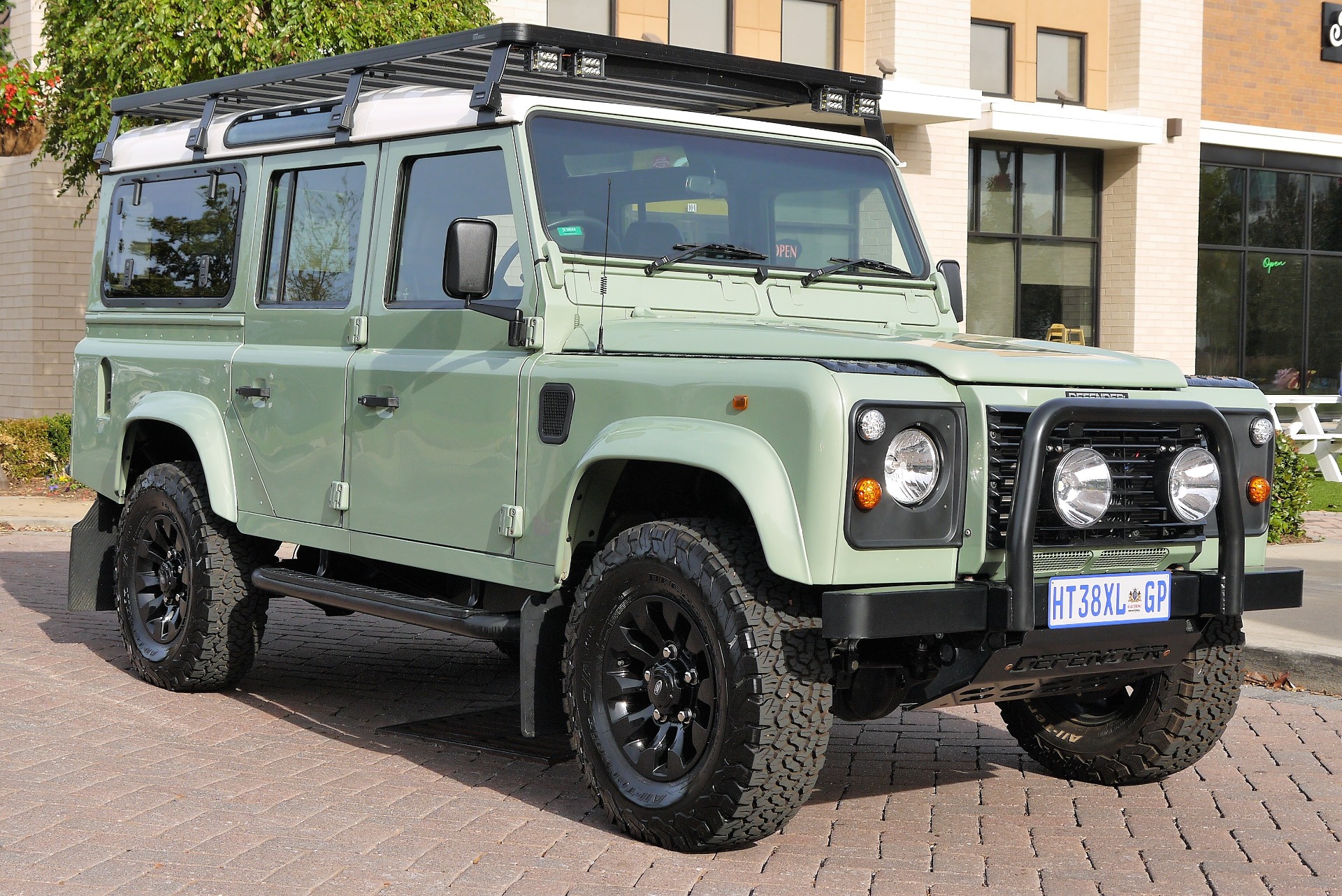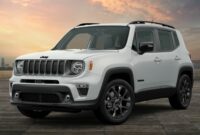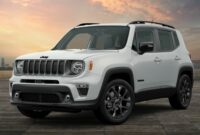Used Jeep 4.0 Engine For Sale: A Comprehensive Buyer’s Guide sale.truckstrend.com
The Jeep 4.0-liter Inline-Six engine is more than just a power plant; it’s a legend. Revered by off-road enthusiasts, mechanics, and everyday drivers alike, this durable and dependable engine powered millions of Jeeps from 1987 to 2006. Its reputation for longevity, ample low-end torque, and relative simplicity makes it a highly sought-after component, even years after its production ceased. For many Jeep owners facing engine issues or embarking on a restoration or custom build, finding a Used Jeep 4.0 Engine For Sale presents a cost-effective and reliable solution to keep their beloved vehicles on the road or trail.
This comprehensive guide will delve into everything you need to know about purchasing a used 4.0L engine, from understanding its various iterations to inspecting a potential candidate and navigating the buying process. Whether you’re replacing a tired engine, breathing new life into a classic, or undertaking a performance upgrade, informed decision-making is key to a successful outcome.
Used Jeep 4.0 Engine For Sale: A Comprehensive Buyer’s Guide
The Legend of the Jeep 4.0L Inline-Six
The 4.0L Inline-Six engine, often affectionately called the "bulletproof" or "indestructible" engine, is a cornerstone of Jeep’s legacy. Introduced in 1987, it became the workhorse for some of Jeep’s most iconic models, including:
- Jeep Cherokee (XJ): 1987-2001
- Jeep Wrangler (YJ, TJ): 1991-2006
- Jeep Grand Cherokee (ZJ, WJ): 1993-2004
- Jeep Comanche (MJ): 1987-1992

Its enduring popularity stems from several key attributes:
- Durability: Built with robust cast iron blocks and simple designs, these engines are known to rack up hundreds of thousands of miles with proper maintenance.
- Torque: The inline-six configuration naturally produces strong low-end torque, ideal for off-road crawling and towing.
- Simplicity: Fewer moving parts than a V-engine and easily accessible components make it relatively simple to work on, even for amateur mechanics.
- Aftermarket Support: A vast array of parts and upgrades are readily available, further extending its lifespan and capabilities.
This legendary status ensures a consistent demand for used 4.0L engines, making it a viable option for those looking to repair or upgrade their Jeeps without breaking the bank on a new crate engine or a completely new vehicle.
Why Buy a Used Jeep 4.0L Engine?
Opting for a used 4.0L engine over other alternatives offers several compelling advantages:
- Cost-Effectiveness: This is often the primary driver. A used engine is significantly cheaper than a brand-new crate engine or a full engine rebuild, especially if your original block is damaged beyond repair.
- Reliability: Given the 4.0L’s reputation, even a used unit, if properly vetted, can provide many more years of dependable service.
- Availability: Due to its long production run and the sheer number of vehicles it powered, finding a used 4.0L engine is relatively easy compared to engines for less common vehicles.
- Perfect for Projects: For enthusiasts restoring a classic XJ or TJ, or those undertaking engine swaps into other vehicles, a used 4.0L provides a solid foundation.
- Maintain Originality: For those who value keeping their classic Jeep as original as possible, a period-correct used engine is the ideal choice.
- Reduced Downtime: Swapping a complete used engine can be quicker than a full rebuild, getting your Jeep back on the road faster.
Key Considerations When Buying a Used 4.0L Engine
Purchasing a used engine requires diligence. Here’s what to look for and consider to ensure you get a quality unit:
- Source Reliability: Buy from reputable sources. This includes established salvage yards, specialized Jeep parts dealers (online or brick-and-mortar), or private sellers with clear documentation. Avoid "too good to be true" deals.
- Mileage: While lower mileage is generally preferred, the 4.0L is known to last. A well-maintained 150,000-mile engine can be better than a neglected 80,000-mile one. Ask for documentation or proof of mileage if possible.
- Maintenance History: If buying from a private seller, inquire about the engine’s maintenance history. Regular oil changes and cooling system maintenance are crucial for the 4.0L’s longevity.
- Visual Inspection (Crucial):
- Oil Leaks: Check for oil residue around the valve cover, oil pan, and especially the notorious rear main seal area. Minor leaks can be fixed, but excessive pooling indicates neglect.
- Cracks: Inspect the engine block and cylinder head for visible cracks. While rare on the block, certain 0331 cylinder heads (2000-2006) are known to be prone to cracking, particularly between cylinders 3 and 4.
- Corrosion: Look for excessive rust or corrosion, especially around coolant passages, which can indicate poor coolant maintenance or overheating issues.
- Sludge: Remove the oil filler cap and peer inside. Excessive black sludge or milky residue indicates neglect, overheating, or coolant contamination.
- Spark Plugs: If accessible, pull a few spark plugs. Their condition can reveal how the engine was running (oil burning, rich/lean conditions).
- Belts and Hoses: While easily replaceable, their condition can hint at overall maintenance.
- Compression Test: This is arguably the most important test. If possible, perform a compression test on all cylinders. Consistent readings across all cylinders (typically 120-150 psi, with no more than 10-15% variance between cylinders) indicate good internal health. A low reading on one cylinder could mean a bad valve, piston ring, or head gasket.
- Casting Numbers & Year Compatibility: The 4.0L evolved over its production run. Ensure the engine you buy is compatible with your vehicle’s year and existing wiring/ECU. Key differences include:
- Renix (1987-1990): Unique engine management system (Bendix-Renault), often harder to swap into HO vehicles due to wiring differences.
- High Output (HO) (1991-2006): Chrysler engine management. Generally more powerful and easier to swap among HO years.
- Coil-on-Plug vs. Distributor (2000-2006): Later HO engines (2000-2006) moved to coil-on-plug ignition, requiring different wiring harnesses and ECUs than earlier distributor-equipped models.
- Accessories Included: Clarify what comes with the engine. Is it a bare long block, or does it include the intake manifold, exhaust manifold, sensors, alternator, power steering pump, AC compressor, and wiring harness? More complete engines simplify the swap but cost more.
- Warranty/Return Policy: Ask about any warranty, even if it’s a short 30-day guarantee. Reputable sellers often provide some form of assurance.
Types/Generations of the 4.0L Engine
Understanding the subtle differences between 4.0L generations is vital for compatibility:
- Renix Era (1987-1990): These early 4.0L engines used a Renix-Bendix fuel injection system. They are known for being robust but have unique sensors and wiring harnesses that make direct swaps with later HO models challenging without significant modifications. Horsepower was around 173 hp.
- High Output (HO) Era (1991-1999): Chrysler took over engine management, leading to the "High Output" designation. These engines saw improvements in horsepower (around 190 hp) and torque. They are generally interchangeable within this range, though minor sensor and accessory differences exist.
- Later HO / Coil-on-Plug Era (2000-2006): These models retained the HO designation but introduced coil-on-plug ignition (eliminating the distributor) and a revised cylinder head (casting number 0331). While the 0331 head is often a point of concern due to potential cracking issues (especially in earlier 2000-2001 models when overheated), many run perfectly fine. Swapping these into earlier models requires significant electrical system changes.
Where to Find Used Jeep 4.0L Engines
- Local Salvage Yards/Junkyards: Often the most affordable option. You can inspect the engine in person, but warranties are usually limited or non-existent.
- Specialized Jeep Parts Dealers: Many businesses specialize in used Jeep parts, often pulling and inspecting engines, sometimes offering short warranties. They might be pricier but offer more peace of mind.
- Online Marketplaces (eBay, Craigslist, Facebook Marketplace): A vast selection, but proceed with caution. Verify sellers’ reputations, ask for detailed photos/videos, and be wary of deals that seem too good to be true.
- Auto Parts Recyclers: Large national and regional chains that salvage parts from wrecked vehicles. They often have sophisticated inventory systems and may offer better warranties and shipping options.
- Jeep Forums and Communities: Enthusiast forums can be great places to find engines for sale, often from fellow Jeepers who understand the value of a well-maintained 4.0L.
The Buying Process: A Step-by-Step Guide
- Define Your Needs: Determine the exact year of your Jeep and the specific 4.0L generation you need for compatibility. Decide if you need a complete engine with all accessories or just a long block. Set a realistic budget.
- Research Reputable Sellers: Look for businesses with good reviews or private sellers with positive feedback.
- Contact Sellers & Ask Detailed Questions: Don’t hesitate to ask about mileage, maintenance history, any known issues, what’s included, and whether a compression test has been performed.
- Request Photos/Videos: Ask for clear pictures from multiple angles, especially of critical areas like the head, oil pan, and bellhousing. If buying remotely, ask for a video of the engine running (if possible) or a video showing the compression test being done.
- Arrange for Inspection: Ideally, inspect the engine in person. If not possible, consider hiring a local mechanic or trusted individual to inspect it for you.
- Negotiate Price: Be prepared to negotiate, especially at salvage yards or with private sellers.
- Understand Warranty & Return Policy: Get the terms in writing.
- Arrange Shipping/Pickup: Factor in shipping costs, which can be substantial for an engine. Ensure proper crating for transport.
Installation and Post-Purchase Tips
Once you have your used 4.0L engine, a few steps can ensure its longevity:
- Pre-Installation Refresh: Even if the engine appears good, consider replacing common wear items while it’s out of the vehicle. This includes:
- Rear Main Seal (a common leak point on 4.0Ls)
- Oil Pan Gasket
- Valve Cover Gasket
- Water Pump and Thermostat
- All external sensors (e.g., oil pressure sender, coolant temperature sensor, CPS)
- Spark Plugs and Wires/Coil Packs
- Engine Mounts
- Flush All Fluids: Thoroughly flush the cooling system and perform an oil change with fresh, quality oil.
- Proper Break-in (if applicable): If the engine has been extensively serviced or rebuilt by the seller, follow any recommended break-in procedures.
- Thorough Tune-Up: Install new air and fuel filters.
- Inspect All Connections: Double-check all wiring, vacuum lines, and fluid connections before starting.
Estimated Used Jeep 4.0L Engine Pricing Guide
Prices for used Jeep 4.0L engines can vary significantly based on condition, mileage, included accessories, seller, and region. The table below provides a general estimate:
| Engine Type/Condition | Typical Price Range (USD) | Notes/What’s Included |
|---|---|---|
| Long Block (High Mileage/Untested) | $400 – $800 | Engine block and head only, accessories typically removed. As-is. |
| Long Block (Mid Mileage/Inspected) | $700 – $1,200 | Engine block and head, visually inspected, potentially compression tested. |
| Complete Engine (High Mileage) | $800 – $1,500 | Includes intake/exhaust manifold, possibly some accessories (alternator, P/S pump). |
| Complete Engine (Mid Mileage) | $1,200 – $2,000 | Running takeout, tested, good compression, most accessories included. |
| Low Mileage/Tested/Warrantied | $1,800 – $2,800+ | Reputable sellers, often from low-mileage wrecks, guaranteed, often crated. |
| Rebuilt/Remanufactured | $2,500 – $4,000+ | Fully rebuilt by a professional shop, new internal components, often with a longer warranty. |
Note: These are estimates. Shipping costs, core charges, and specific engine year/condition will impact the final price.
Frequently Asked Questions (FAQ)
Q: Can I put a 2000 4.0L engine into a 1995 Jeep Cherokee?
A: Physically, yes, it will bolt in. However, the 2000 engine uses coil-on-plug ignition and a different ECU/wiring harness than the 1995 distributor-based system. This swap requires significant electrical modifications and swapping various sensors and components, making it more complex than swapping within the same generation.
Q: What’s the main difference between a "Renix" and "HO" 4.0L?
A: The primary difference lies in the engine management system and slightly higher horsepower for the HO. Renix (1987-1990) uses a Bendix-Renault system, while HO (1991-2006) uses a Chrysler system. They have different sensors, wiring, and ECUs, making direct electrical swaps difficult.
Q: How many miles are too many for a used 4.0L?
A: There’s no hard rule. Many 4.0Ls routinely hit 200,000-300,000 miles or more. A well-maintained engine with 180,000 miles and good compression can be a better buy than a neglected one with 100,000 miles. Focus on the engine’s condition and maintenance history rather than just mileage.
Q: What is the "0331 head" issue?
A: The 0331 cylinder head was introduced in 2000 models. Some of these heads, particularly those from 2000-2001, are known to develop cracks between cylinders 3 and 4, usually due to overheating. While not all 0331 heads crack, it’s a known vulnerability. If buying a 2000-2006 engine, inspect this area carefully. Later 0331 heads (after 2001) often have minor revisions that made them less prone to cracking.
Q: Should I buy a complete engine or just a long block?
A: A complete engine (with intake, exhaust, accessories) is generally easier to swap as it requires less component transfer. However, it’s heavier and more expensive. A long block is cheaper and lighter for shipping, but you’ll need to transfer all your existing accessories, which can be time-consuming and may require replacing old parts. Your budget and mechanical skill level should guide this decision.
Q: What should I replace before installing a used engine?
A: At a minimum, replace the rear main seal, oil pan gasket, valve cover gasket, water pump, thermostat, and all spark plugs. Consider new engine mounts and a full fluid flush. This preventative maintenance saves time and effort later.
Concluding Summary
The Jeep 4.0L Inline-Six engine remains a titan in the automotive world, celebrated for its legendary reliability and robust performance. For many Jeep owners, acquiring a Used Jeep 4.0 Engine For Sale is not just a practical solution to a mechanical problem, but an investment in the continued life of a cherished vehicle. While the allure of cost savings is strong, the key to a successful purchase lies in meticulous research, thorough inspection, and an understanding of the different engine generations.
By following the advice in this guide, asking the right questions, and prioritizing condition over mere mileage, you can confidently navigate the market for a used 4.0L. A well-chosen and properly installed used 4.0L engine will undoubtedly breathe new life into your beloved Jeep, ensuring many more years of adventures on and off the pavement.


